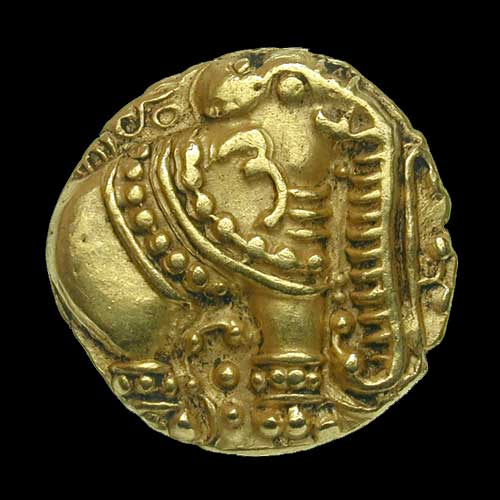ASI Releases Paper on the Discovery of Ganga Dynasty Coins in Shivamogga
2018-01-24 Wed
13 gold coins from the 7th century were excavated 4 years ago at the Pranaveswara temple complex in Talagunda, Shivamogga, Karnataka. They were handed over to the Archaeological Survey of India’s (ASI) Bengaluru office for research. The coins weigh around 8 grams and feature beautiful depictions of elephants. The ASI department has released a paper to share more information about the discovery.Several stone inscriptions and “hero stones” have been discovered in Bengaluru. All this evidence suggests that the city has a strong connection with the Ganga Dynasty. They also reveal interesting historical facts about the hamlets and rulers during those times. Talagunda was an ancient agrahara, Sthanakundura. It is believed that Kadambas originated from this region. Historians and archaeologists have always loved this region because of its historical significance.
Researchers confirmed that the coins that were found earlier belonged to later Ganga rulers (after 8th century). However, these 13 coins are of early Ganga period (5th to 7th century). The coins also feature names of the rulers who issued them - Durvinita, Srivikrama, and Bhuvikrama. The legends on the coins were based on a local script of early Ganga rulers. Durvinita ruled between 495 and 530 AD. One coin dates back to the 5th century. The Coin of Bhu Vikrama was struck around 635 AD. The legends were written on the shoulder of the elephant figure. When extra gold was chipped off from the edges, the legends were damaged. These 13 coins were found in a stratified deposit dated 635-679 AD. This discovery reinstates Ganga Dynasty’s power over the Kadambas during the rule of Avanita, Durvinita, Mushkara, Srivikrama, and Bhuvikrama.
Latest News
-
Gold Pagoda of Vijaynagar Empire King Deva Raya I
2024-04-10 WedKing Deva Raya I of the Vijayanagara Empire was a patron of Kannada literature and architecture. He ...
-
Silver Denarius of Septimus Severus
2024-04-05 FriLucius Septimius Severus served as the Roman emperor from 193 to 211 AD. Severus sat on the throne o...
-
Extremely rare 'Malaharamari' type Gold Gadyana of King Guhalladeva-III Sold for INR 611000
2024-04-03 WedTribhuvanamalla, also known as Guhalladeva III, was the ruler of the Kadamba dynasty. His reign coin...
-
90 Years of RBI
2024-04-02 TueOn 1st April, PM #Modi unveiled a special commemorative coin marking 90 Years since the foundation o...
-
Silver Denarius of Julia Mamaea
2024-04-02 TueJulia Avita Mamaea, a Christian Syrian noblewoman, was the mother of Roman Emperor Alexander Severus...

